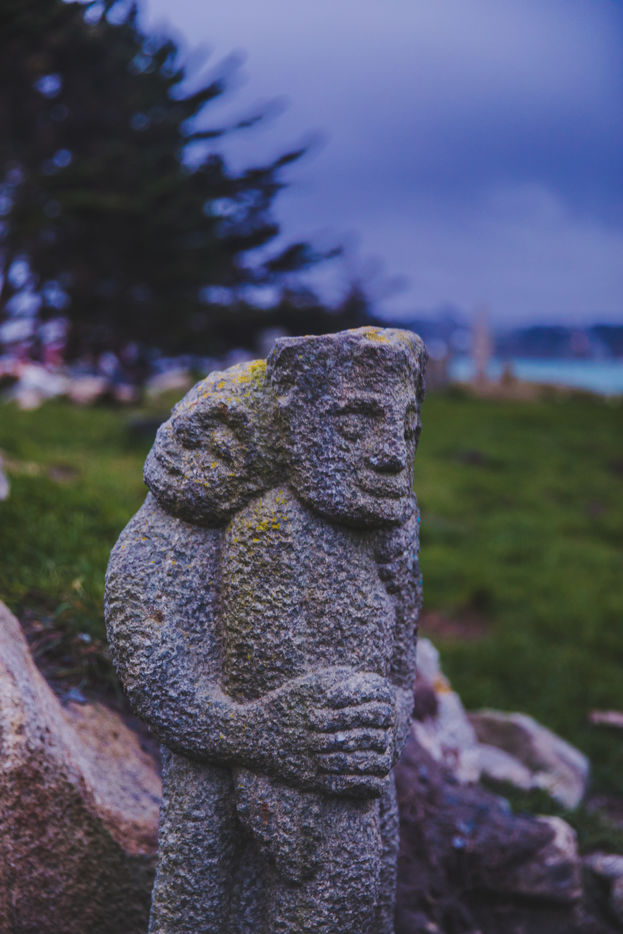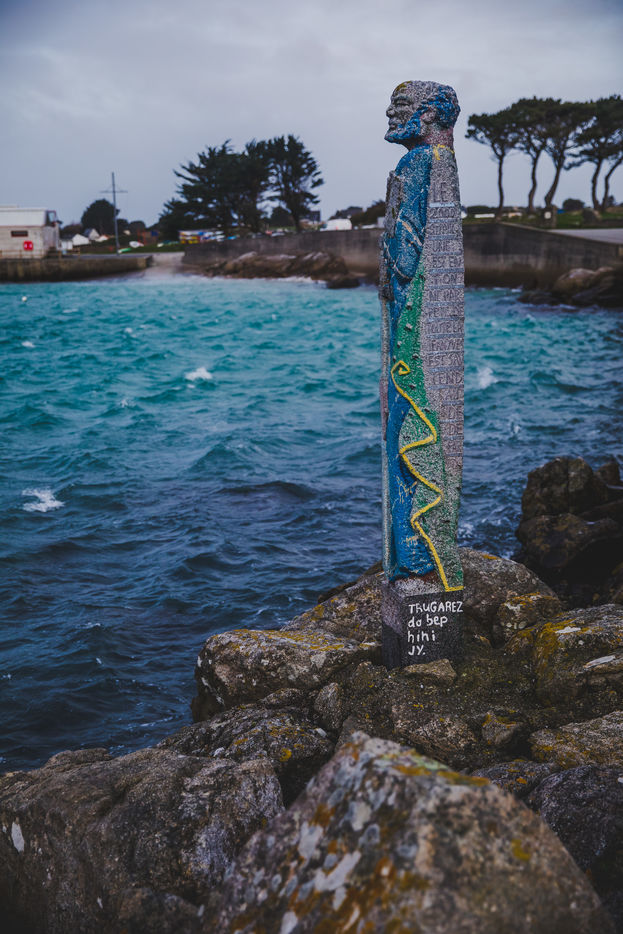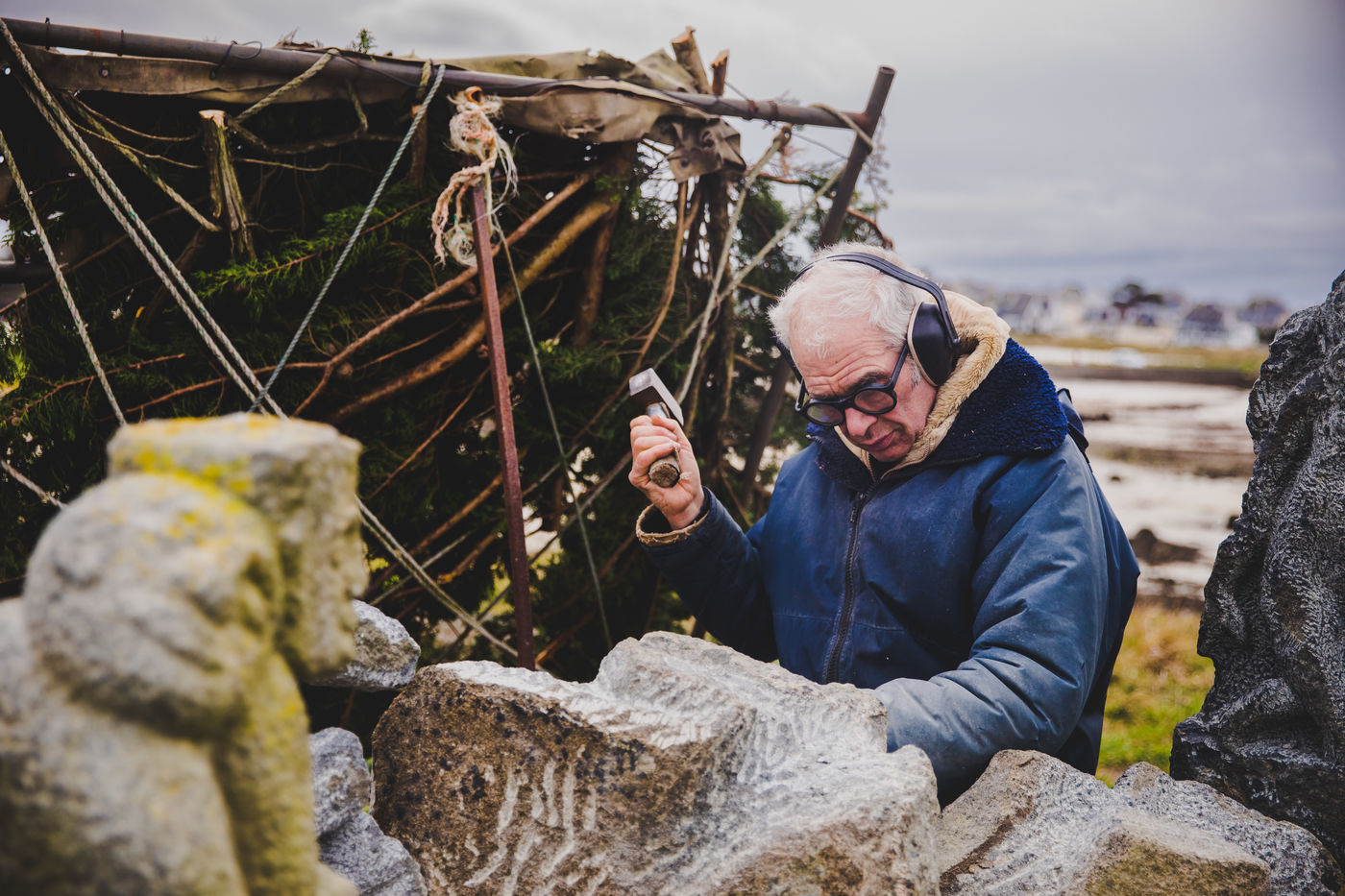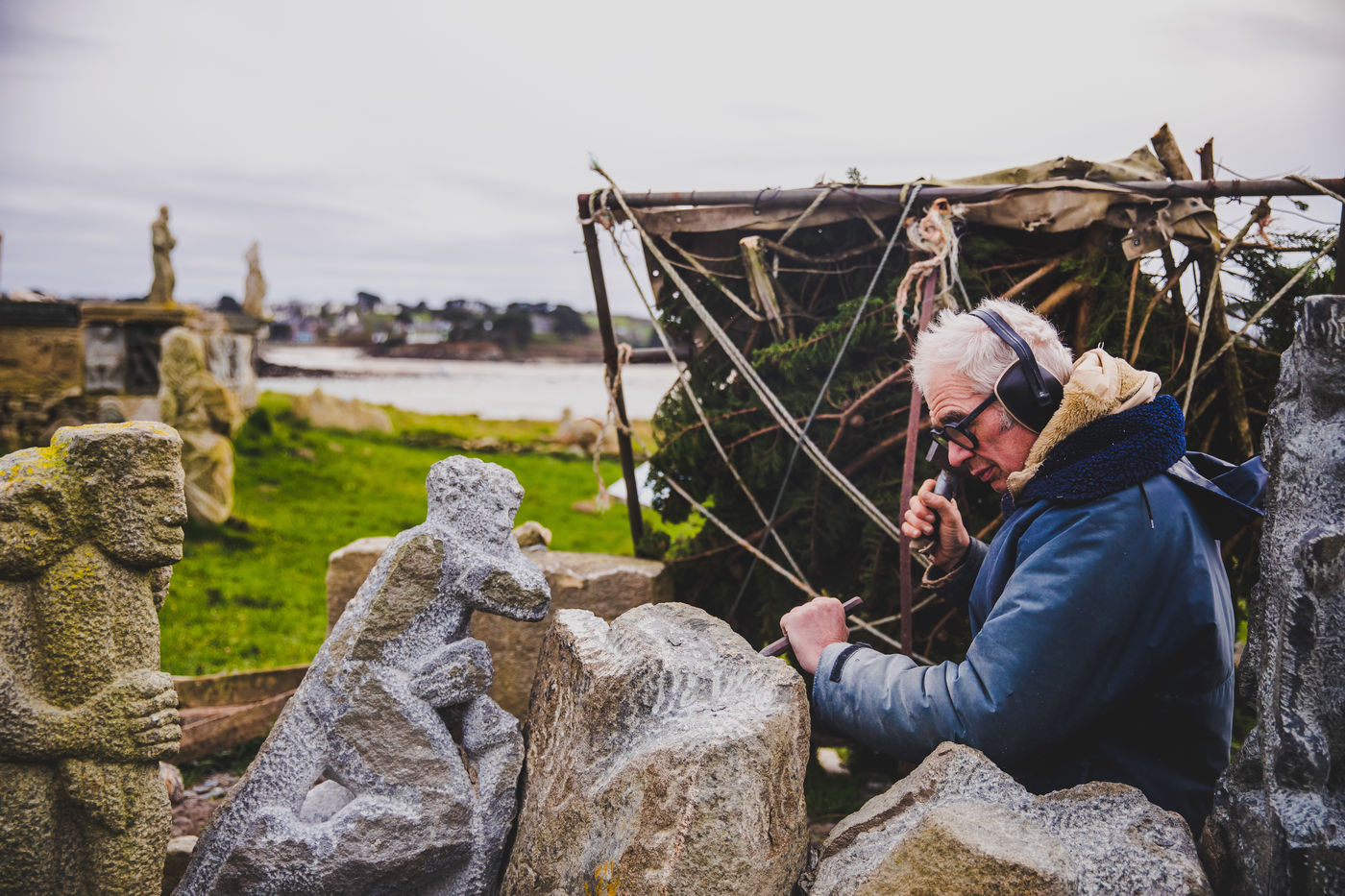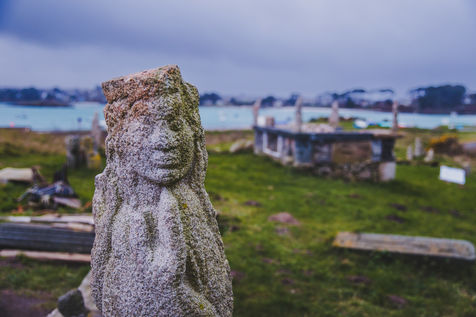Pour accéder à la série en entier, vous devez vous logger ou demander un compte Hans Lucas en cliquant ici.
LE CALVAIRE DE FANCH BRETON
Nous sommes en Bretagne, sur la Côte des Légendes. Entouré de statues qui semblent le fixer avec bienveillance, un homme taille un bloc de granit. Cet homme, c'est François Breton, parfois appelé Fañch. Fañch édifie le Calvaire de l'Estran, l'ouvre de sa vie. Ses bas-reliefs se font l'allégorie d'existences, comme celle de cet ami marin qui après une vie heureuse, a traversé maintes épreuves avant de décéder. Ses statues, 300 à terme, apaisent les souffrances. Certaines sont des commandes de particuliers. Elles honorent la mémoire d'êtres aimés et soulagent des plaies de l'âme. Un homme de pierre croise les bras face à la mer. C'est une représentation du père défunt de Fañch. Un peu à l'écart du Calvaire, se dresse la statue de Saint-Tariec, moine d'origine irlandaise et Saint Breton. Fañch précise : « Cette sculpture à la pointe, elle est là pour protéger la péninsule des assauts de la mer. Il a une allure féminine parce qu'il n'y a que la femme pour assurer une telle protection ». Fañch ajoute : « cela fonctionne ». Ses statues prennent corps au gré des mouvements de sa massette et de son gravelet. Elles semblent vivantes. Comme dans la vie, la fin n'est pas écrite, elle reste à découvrir.
FANCH BRETON'S CALVARY
We are in Brittany, on the coast of legends. Surrounded by statues that seem to stare at him benevolently, a man is cutting a block of granite. This man is François Breton, sometimes called Fañch. Fañch is building the Calvary of the Estran, his life's work. It is the allegory of an existence, the one of a sailor friend who, after a happy life, went through many hardships before passing away. His statues, 300 in length, pay tribute to the memory of loved ones and relieve some wounds of the soul. Some of them were commissioned by private individuals. A stone man is crossing his arms and facing the sea. The statue is a representation of Fañch's late father. A bit distant from the Calvary, a statue of Saint-Tariec, monk of Irish origin and Armorican Saint in French Brittany, overlooks the sea. Fañch explains: "This sculpture at the tip of the peninsula aims to protect the location from the onslaught of the waves. It looks like a woman because only a woman is able to provide such a protection." And Fañch adds with conviction: "it works". His statues take shape with the movements of his hammer and his gravel. They seem to be alive. As in life, the end is not written, it remains to be discovered.
